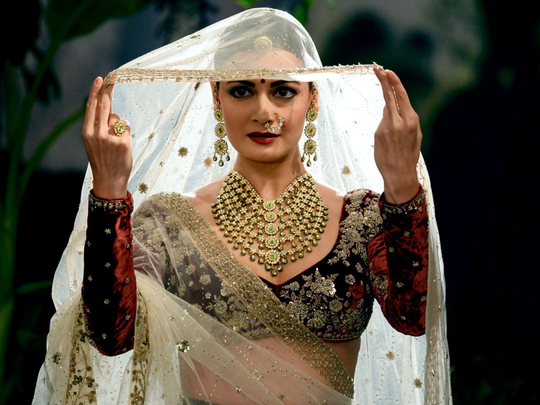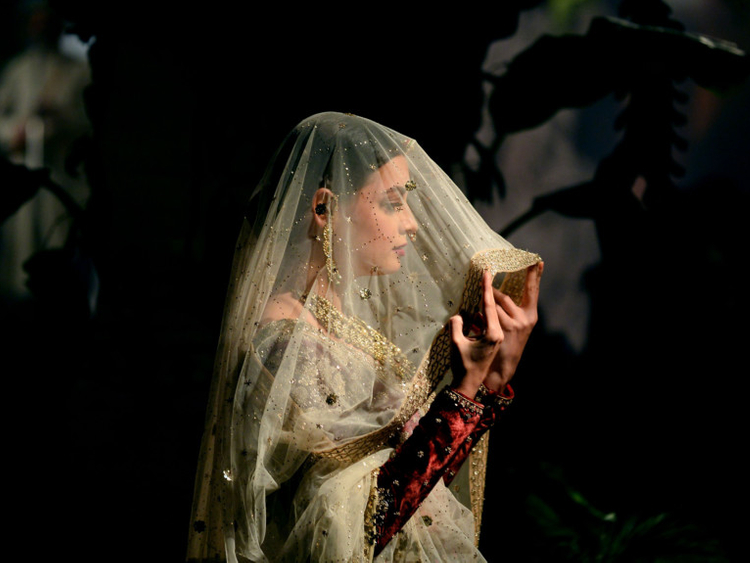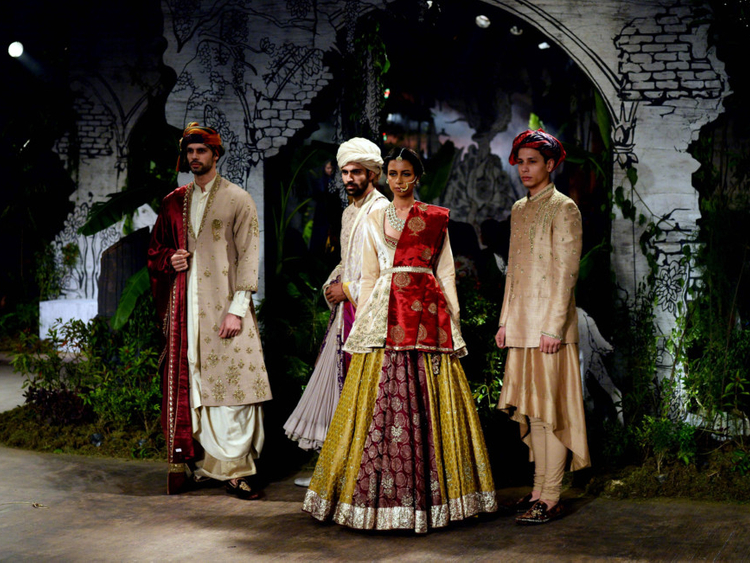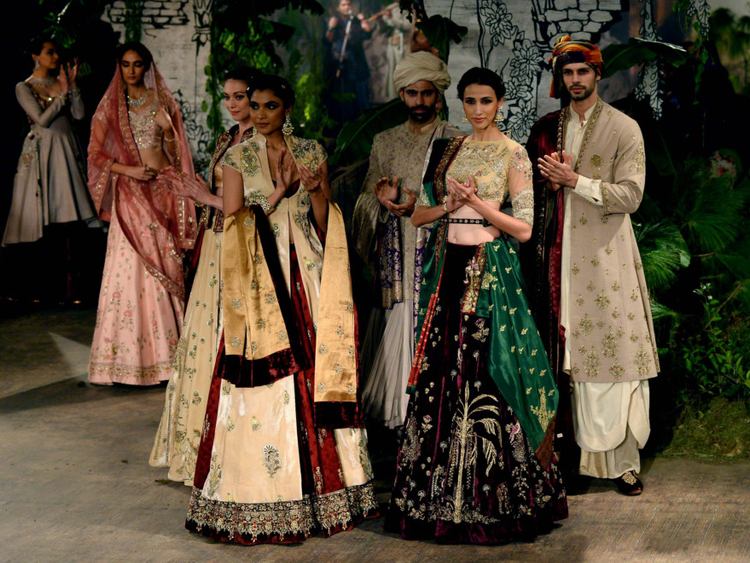
For actress-producer Dia Mirza being the showstopper at designer Anju Modi’s India Couture Week show on Thursday had special meaning. She wore a traditional outfit, part of the ‘Sunehri Kothi’ (Golden chalet) collection, on an “environment friendly” runway.
“Thank you for making me part of this as I am a complete nature lover. I can’t imagine art, motifs inspired by nature. This collection really depicts that,” Mirza said while praising Modi.
“She [Anju] has been responsible for safeguarding our heritage. She has taken handicrafts and textiles to the next level. I felt exquisite today wearing this beautifully handcrafted outfit.
“It’s delicate, intricate and has resonance of an era gone by,” added the actress.
Mirza says her mother is her style role model. “All of my life I remember looking up to my mother’s starry eyes ... my mother has an amazing personality. All this intrigued me about her.
“The way she carried herself. Her personality reflected so strongly in anything that she wore. That’s what completes your garment. It’s your character and your personality,” said Mirza.
Modi, who played designer to stars in the majestic film Bajirao Mastani, chose a combination of green and maroon for Mirza’s lehnga in organza. The maroon full sleeved velvet blouse and off-white and golden dupatta that she wore around her head, and heavy jewellery and make-up made her look like she had just finished shooting a period film.
“I took inspiration from the miniature art of 16th century Rajasthan, especially Kishangarh. Dia looks like a princess from Rajasthan,” said Modi, who used cow and deer motifs for her collection.
Modi’s collection features lehngas made from handwoven textiles, and were worn with fitted blouses.
She took cue from architectural and artistic influences of the craft of Meenakari, with its intricate and detailed brushwork, and the colours it employed, handmade from minerals, vegetables, and embellished with precious stones, pure gold and silver.
Many of her designs are inspired by the Kishangarh school of art that Princess Vaishnavi Kumari of Kishangarh introduced to her.
Kumari’s art finds great resonance in Modi’s collection, which shone brighter thanks to uncut diamonds, polkies and rubies that were flaunted by the models, who moved to the sound of flute, sarangi and the voice of a classical singer.
The menswear gets full points, too. Just like in the Indian miniature art, the male models were dressed like the Hindu deity Krishna and friends.
“I gave those kind of layers and drapes,” Modi said.















